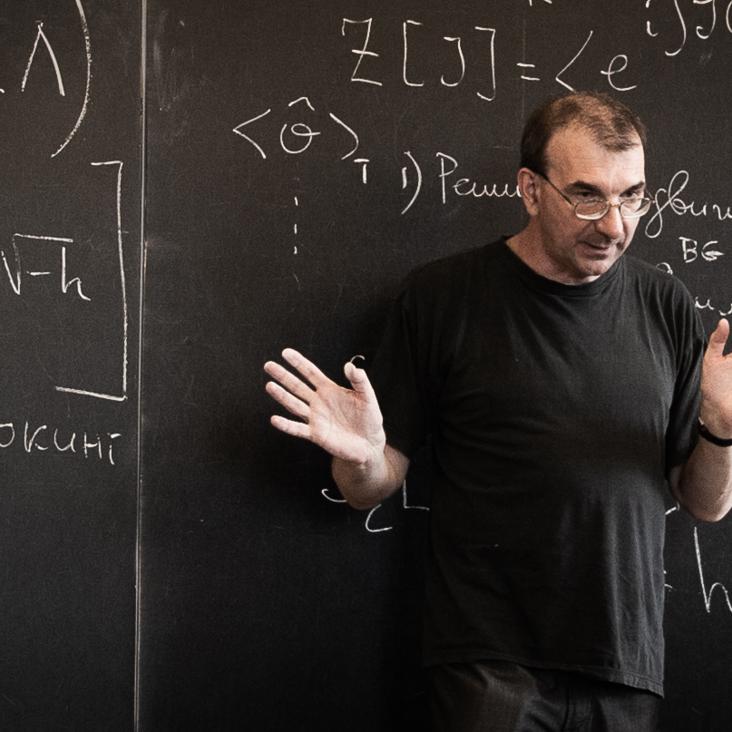The silence of the little strings
Journal of High Energy Physics (2005) 731-755
Abstract:
We study the hydrodynamics of the high-energy phase of Little String Theory. The poles of the retarded two-point function of the stress energy tensor contain information about the speed of sound and the kinetic coefficients, such as shear and bulk viscosity. We compute this two-point function in the dual string theory and analytically continue it to lorentzian signature. We perform an independent check of our results by the lorentzian supergravity calculation in the background of non-extremal NS5-branes. The speed of sound vanishes at the Hagedorn temperature. The ratio of shear viscosity to entropy density is equal to the universal value 1/4π and does not receive α′ corrections. The ratio of bulk viscosity to entropy density equals 1/10π. We also compute the R-charge diffusion constant. In addition to the hydrodynamic singularities, the correlators have an infinite series of finite-gap poles, and a massless pole with zero attenuation. © SISSA 2005.Sound waves in strongly coupled non-conformal gauge theory plasma
(2005)
Coupling constant dependence of the shear viscosity in N = 4 supersymmetric Yang-Mills theory
Nuclear Physics B 707:1-2 (2005) 56-68


